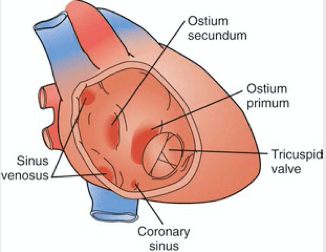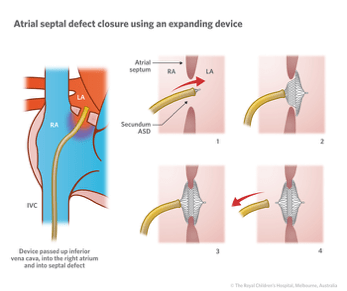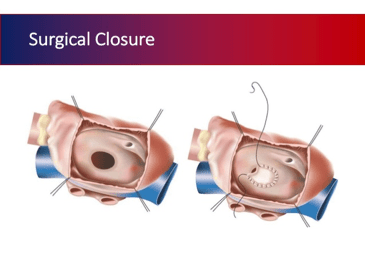About Atrial Septal Defects
Atrial septal defect (ASD) is a common type of congenital heart defect, occurring in approximately 25% of all children1.
An ASD is a small opening between the Right and Left Atria, allowing oxygenated blood to enter the right atria via the small opening in the septum. ASD may be present in as many as 1.6 per 1000 live births and are frequently associated in patients with down syndrome, turner syndrome and maternal exposure to illicit drugs such as cocaine, alcohol.
There are several subtypes of ASD:
- Ostium Secundum defect- most common, found approx. mid centre atrial septum- Patent Foramen Ovale (PFO) is considered a subclass of this defect
- Ostium primum defect- found bottom region of atrial septum
- Sinus venous defect- commonly associated with abnormal venous/ arterial vascular conditions

Many ASD’s less than 5 mm in size may close naturally during the first year of life and not require any intervention. ASD’s > 1 cm may require surgical/medical intervention to correct the abnormality3.
There are many considerations to treatment, type/ size of ASD and the presence of symptoms influence when (or if) treatment is instigated. These considerations will determine whether closure treatment is performed using:
- Open heart surgery: usually for patients with ostium primum and sinus venous ASD’s.
- Catheter based treatment- the ASD is closed using small catheters inserted into the heart via arteries/veins etc to access the defect and closed using a Septal Closure device. There are several commercially available closure devices available, your Cardiologist will discuss options with you or your patient.
Examples of catheter-based ASD closure procedure:


What is an Atrial Septal Defect?
This very common congenital heart defect is most frequently detected in early childhood, however, can be picked up throughout the entire lifetime. Dr Yishay Orr, Cardiothoracic Surgeon, explains how these abnormalities might present in various age groups, discussing the diagnosis and work up process, and treatment options.
